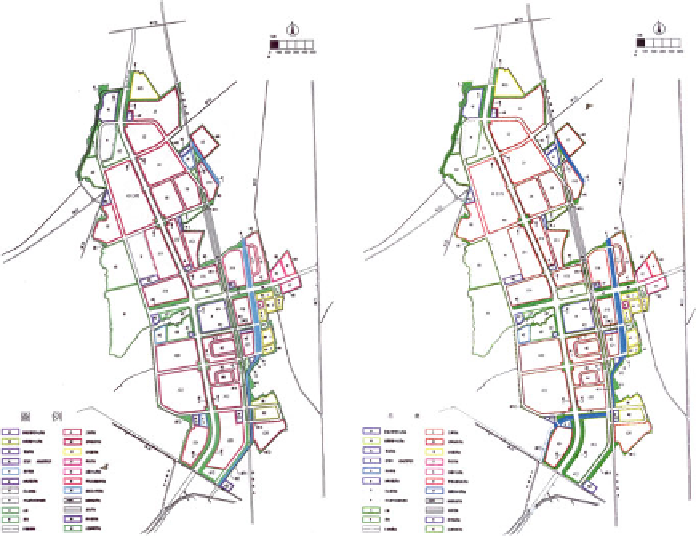Civil Engineering Reference
In-Depth Information
industrial importance of the enterprise and the strong political connections of the
entrepreneur, Premier Lien visited the TSP again and demanded the acceleration of
drainage system improvement project.
By September 1998, six emergency systems of drainage and flood preventions were
completed, including: the Tachou drainage passage, the basic work of detention pond
D, temporary drainage network, increasing the height of ChiMei waterproof dyke,
completion of drainage and flood control measures before the beginning of con-
struction, and establishment of the united typhoon defence organization in the park. In
September, NSC submitted The Revision of TSP Detail Plan (Extension of Detention
Ponds) report to MOI, and it was approved in June 1999. It is recognized that the
original detention pond system had underestimated the drainage need in the southern
part and the existing Tachou drainage capacity would not match future catchment area
flood volume. Although Tachou drainage flows almost along the eastern and southern
borders of the park, hence almost half of its catchment area is outside of the park, NSC
decided the project would include the whole catchment area. Except for the rear-
rangement of drainage passages in the park, a significant change in land-use planning
is the enlargement of detention pond in the south-end, increasing its area from the
original 2.5 ha to 20 ha Map 4 from (China Engineering Consultants
2002
), together
with the changed drainage course and other open spaces, forming a southern blue-
green corridor. In March 1999, the Tachou drainage remediation engineering was
completed. There has been no flood hazard in and around the TSP since 1999.

Search WWH ::

Custom Search